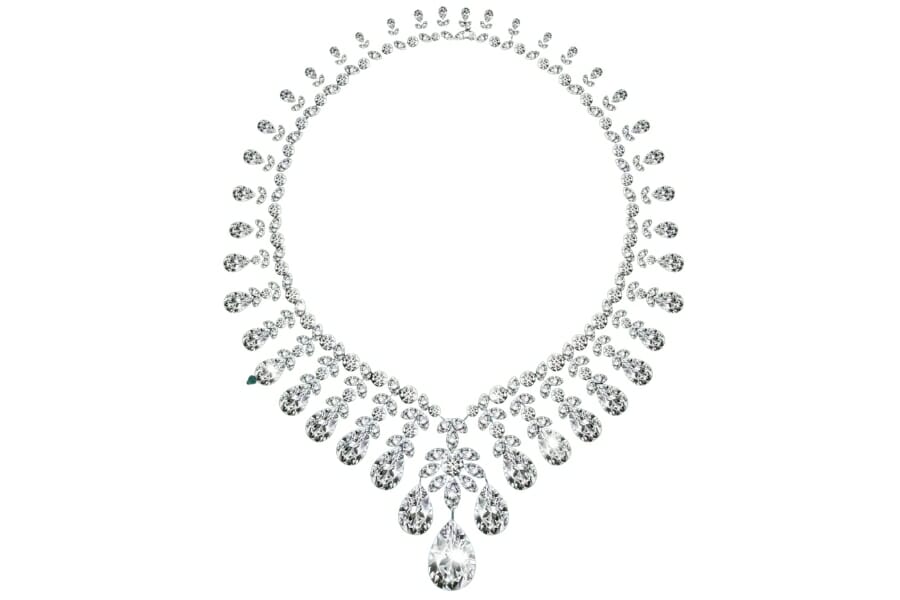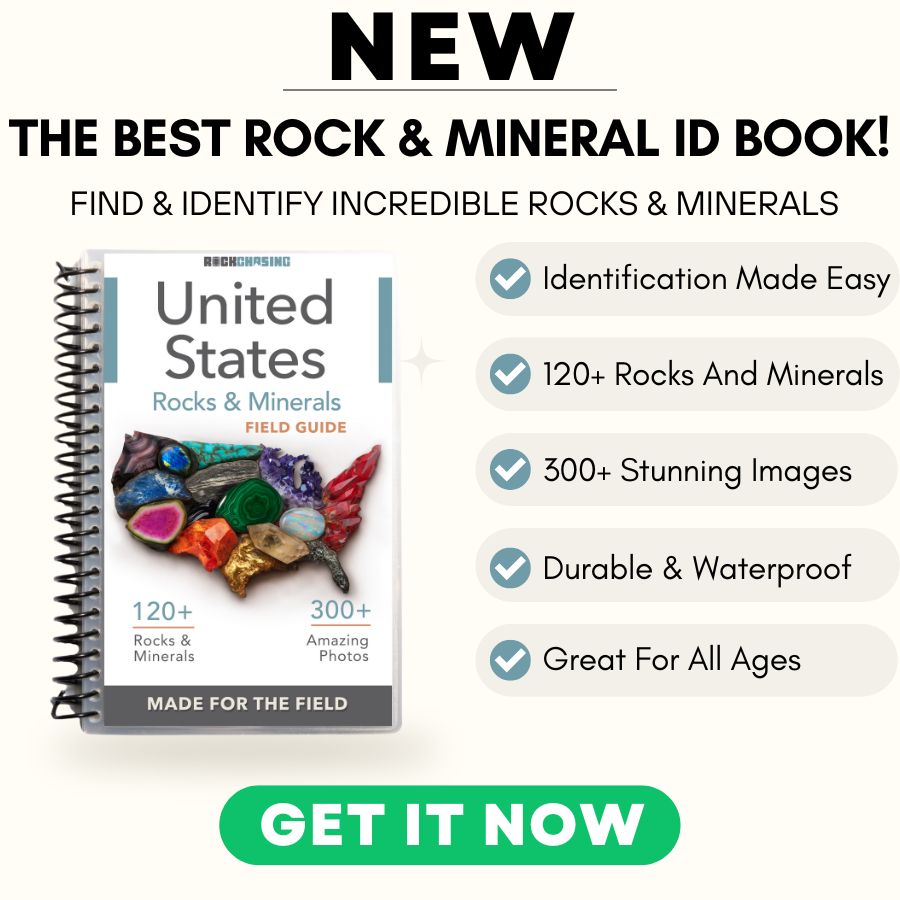You might be thinking, “Aren’t diamonds and quartz pretty different?” In many ways, you’d be right! But they also share some surprising common ground. In this article we’ll delve into the specifics of the comparison between quartz vs diamond.
But why should we care about quartz and diamond, you ask? Well, aside from their obvious beauty, these two minerals have shaped human history in more ways than one.
From the tools of ancient civilizations to modern-day technology and fashion, the impact of these gemstones is far-reaching. Whether it’s a crystal clear quartz or a dazzling diamond, these stones speak to the curious heart, beckoning us to learn more about our wondrous planet.
So, strap on your explorer’s hat and lace up those adventure boots as we embark on a journey exploring the enchanting realms of quartz and diamond.
Quartz vs Diamond – The Major Differences
As we go through the major differences of diamond vs quartz, you’ll realize how such two different gems can be equally stunning and interesting in their own rights. Below are the characteristics where quartz and diamond are most different in:
Color and Appearance – Quartz looks foggy and cloudy
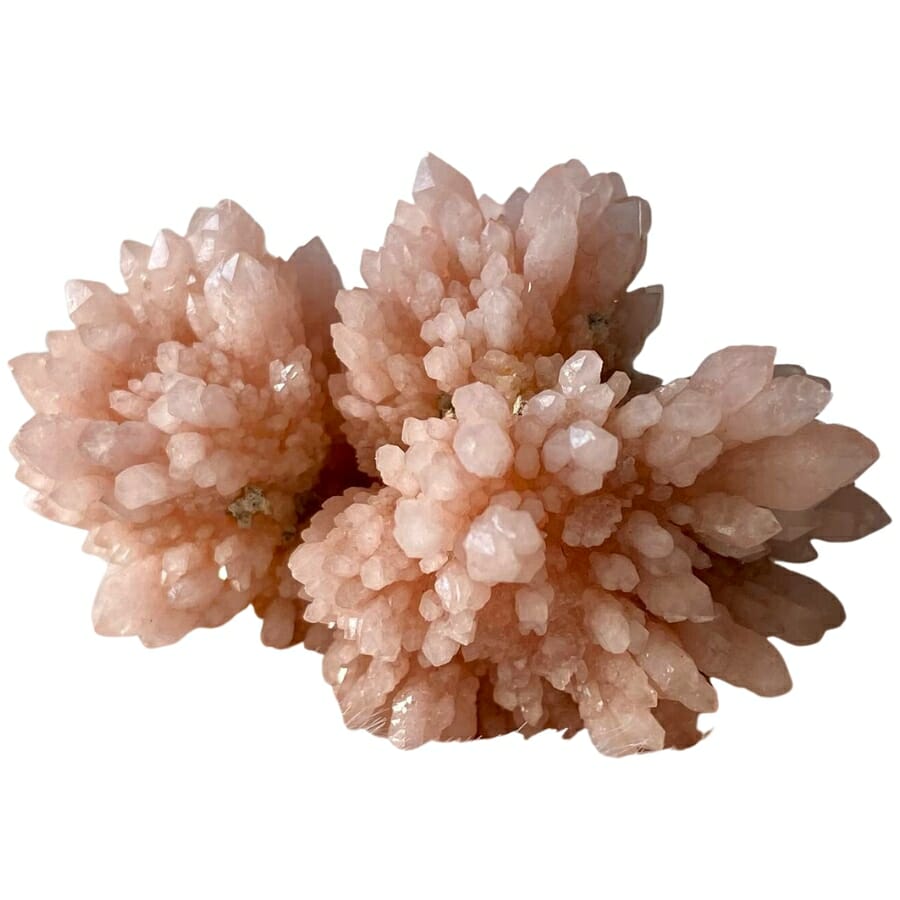
Quartz and diamond are two of our most eye-catching natural treasures, yet they can look quite different from each other.
First, quartz can come in a rainbow of colors! Ever seen a purple gemstone? That might be an amethyst, which is a type of quartz. If you’ve spotted a pink crystal, that’s likely rose quartz.
But quartz doesn’t stop there; it can also be colorless, like clear glass, and sometimes even has cool patterns or clouds inside it. When you hold a piece of quartz up to the light, it often looks a bit cloudy or foggy.
As for diamonds, most people think of it as being clear and sparkly, and they’re not wrong! A classic diamond looks like a drop of pure, shimmering water. It’s incredibly shiny and reflects light like tiny mirrors.
But diamonds can also surprise you with colors like yellow, blue, and even black! These colors happen because of tiny bits of other stuff, called impurities, inside it.
Luster – Diamond has an adamantine luster
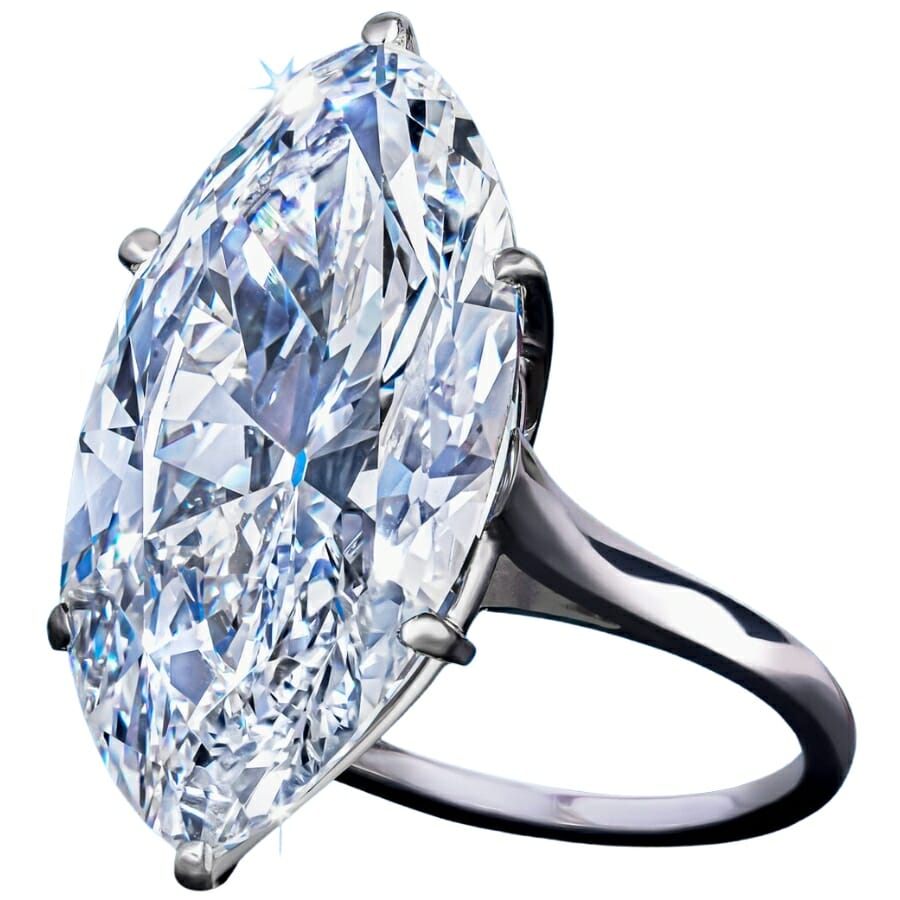
Luster is all about how a mineral reflects light, and just like our personalities, each mineral has its own unique shine.
Picture a windowpane on a sunny day. That shiny, glassy look it has? That’s similar to the luster of quartz. We call it a vitreous luster, which means “like glass.” When light hits its surface, it reflects in a way that makes it look smooth and glassy.
As for diamonds, well, these guys are in a league of their own! Diamonds have what we call an adamantine luster, which means it’s super, super shiny— even shinier than glass.
When light hits it, it doesn’t just reflect off the surface; it bounces around inside, breaks into a rainbow of colors, and shoots back out with a brilliant sparkle. That’s why diamonds can look like they’re twinkling, especially when they’re moved around.
To sum it up, quartz has a beautiful glass-like shine, while diamonds dazzle with their intense and brilliant sparkle.
Crystal Structure – Quartz has a hexagonal crystal system
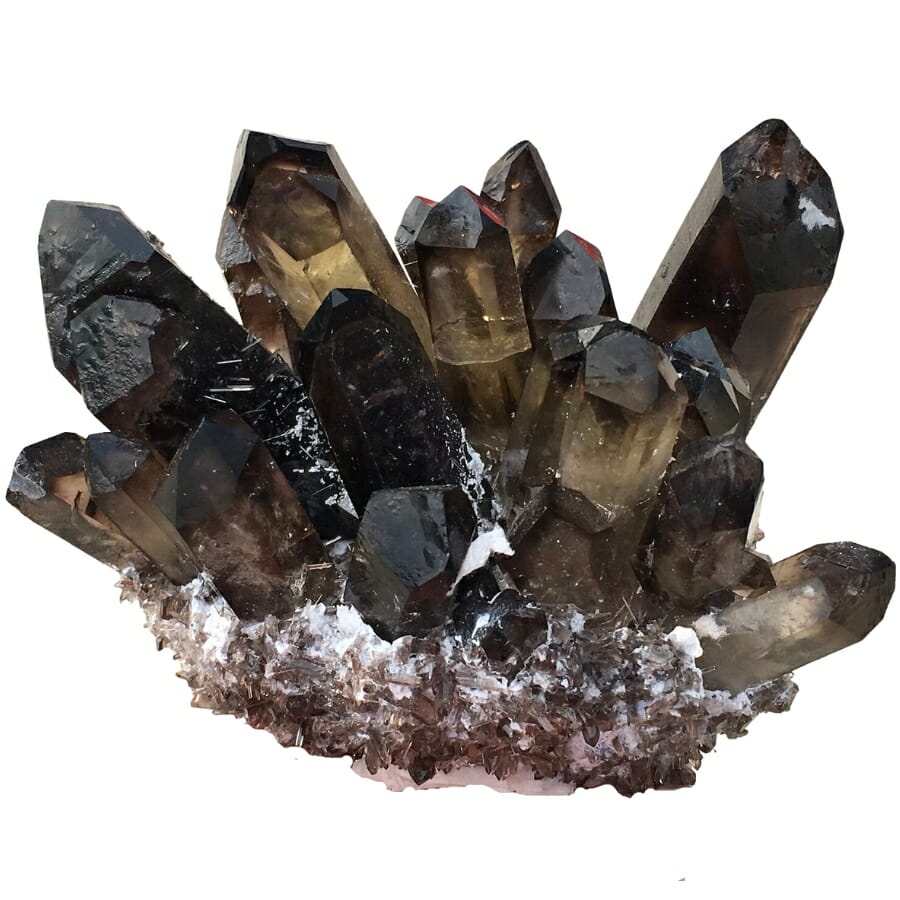
Every crystal, whether it’s a tiny grain of salt or a giant diamond, is made up of atoms arranged in a specific pattern. This pattern is what we call their “crystal structure.”
Starting with quartz: imagine a toy building set, like LEGOs. Each piece connects in a certain way, right? The atoms in quartz connect to form a pattern that looks like a hexagon.
This hexagonal shape can sometimes be seen in larger quartz crystals, especially when they’re long and pointy. If you ever find a quartz crystal in nature and it has six sides, you’re seeing a hint of its hexagonal crystal structure!
In comparison, diamonds are all about the cube. Their atoms connect in a pattern that forms cubes, and this is known as a cubic crystal structure. Sometimes, if you’re really lucky, you might find a rough diamond that still has its cube-like shape.
But even if a diamond is cut and polished, its atoms inside are still hanging out in their special cubic pattern.
Cleavage – Diamonds have perfect cleavage in four directions
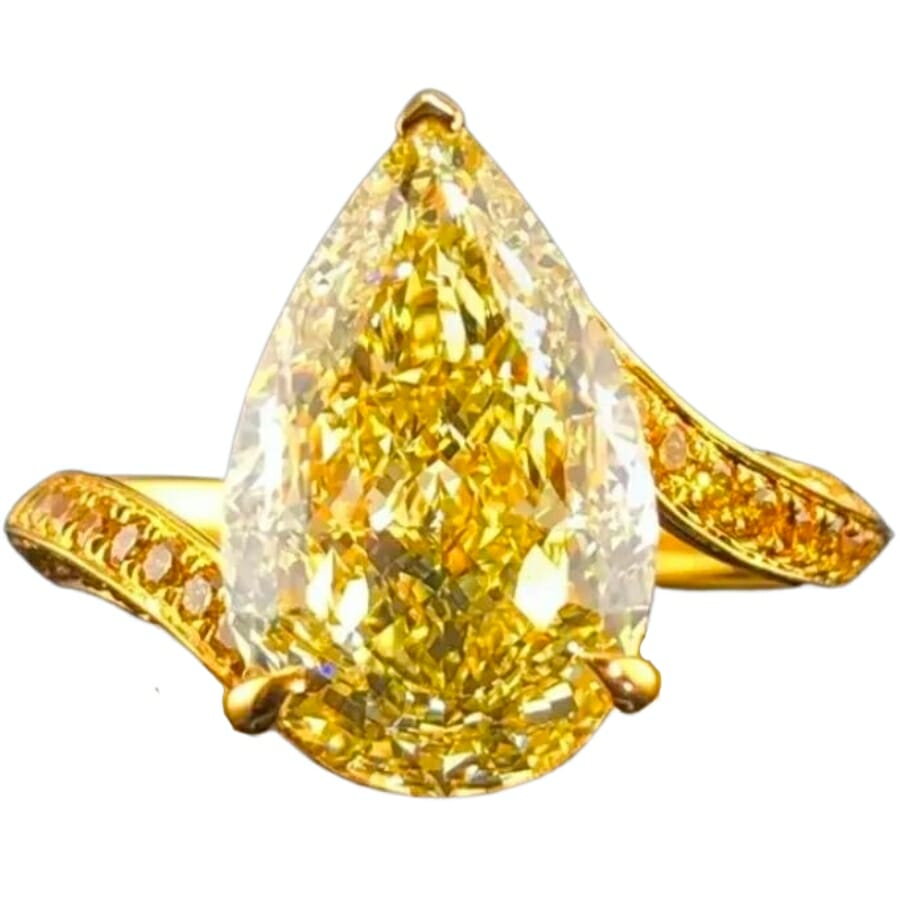
In the world of rocks and minerals, cleavage is all about how a mineral breaks. Some minerals have a natural tendency to split in specific directions, and this is called cleavage.
When you try to break quartz, it doesn’t split evenly or smoothly like some minerals. Instead, it fractures or breaks in a curved, uneven way. This type of break is called conchoidal fracture, which might make you think of a seashell’s curved shape.
So, if you were to hit a piece of quartz with a hammer (safely, of course!), you’d get pieces with curvy, uneven surfaces, not flat and smooth ones.
On the flip side, diamonds have a unique feature: they split super smoothly in certain directions. This is their cleavage. In fact, diamond has perfect cleavage in four different directions.
This property is super handy for jewelers! When they’re shaping diamonds for jewelry, they can use the diamond’s cleavage to help them split the stone neatly and get the shapes they want.
Composition – Quartz is composed of silicon dioxide
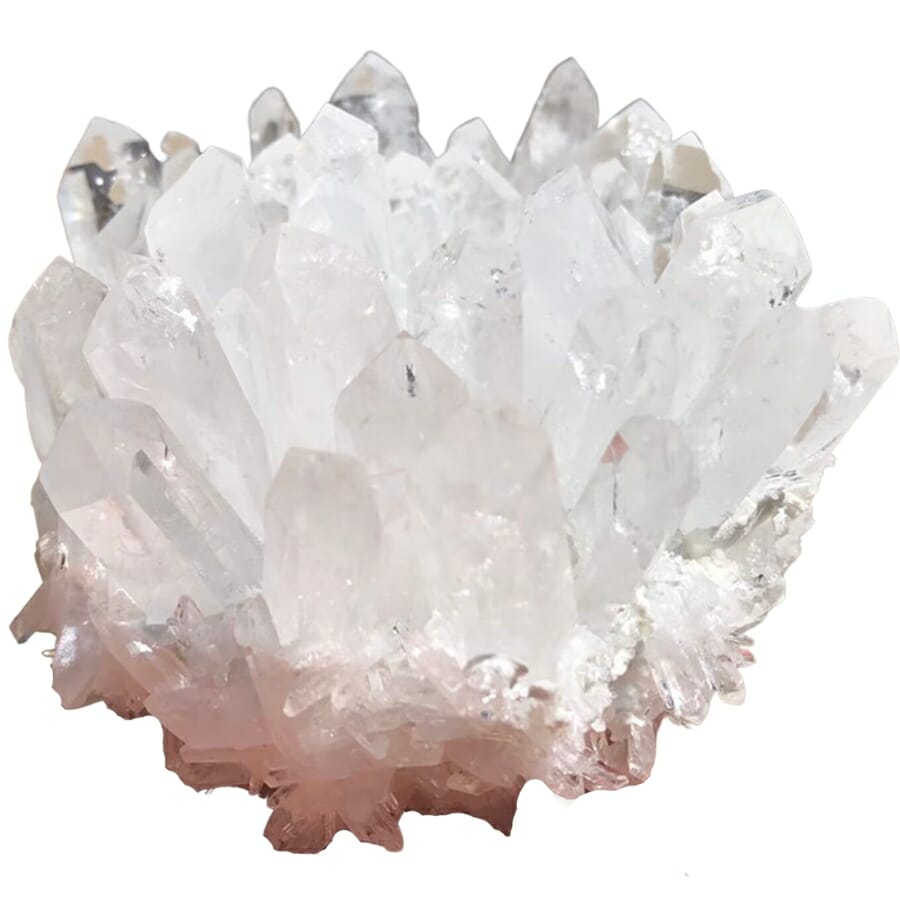
Let’s imagine for a moment that minerals are like cookies. Each cookie has its own set of ingredients. In the same way, every mineral has its own “recipe” or composition made up of different atoms.
The main ingredient for quartz is silicon dioxide. Sounds fancy, but it’s actually made of just two types of atoms: silicon (Si) and oxygen (O2). When you mix one silicon atom with two oxygen atoms, you get silicon dioxide (SiO2).
Meanwhile, diamonds are simpler when it comes to their composition. They’re made entirely of one type of atom: carbon.
The whole diamond is packed with these carbon atoms, all linked together in a tight, strong pattern. It’s this pure carbon structure that gives diamonds their incredible hardness and sparkle.
Hardness – Diamond is the hardest known natural substance
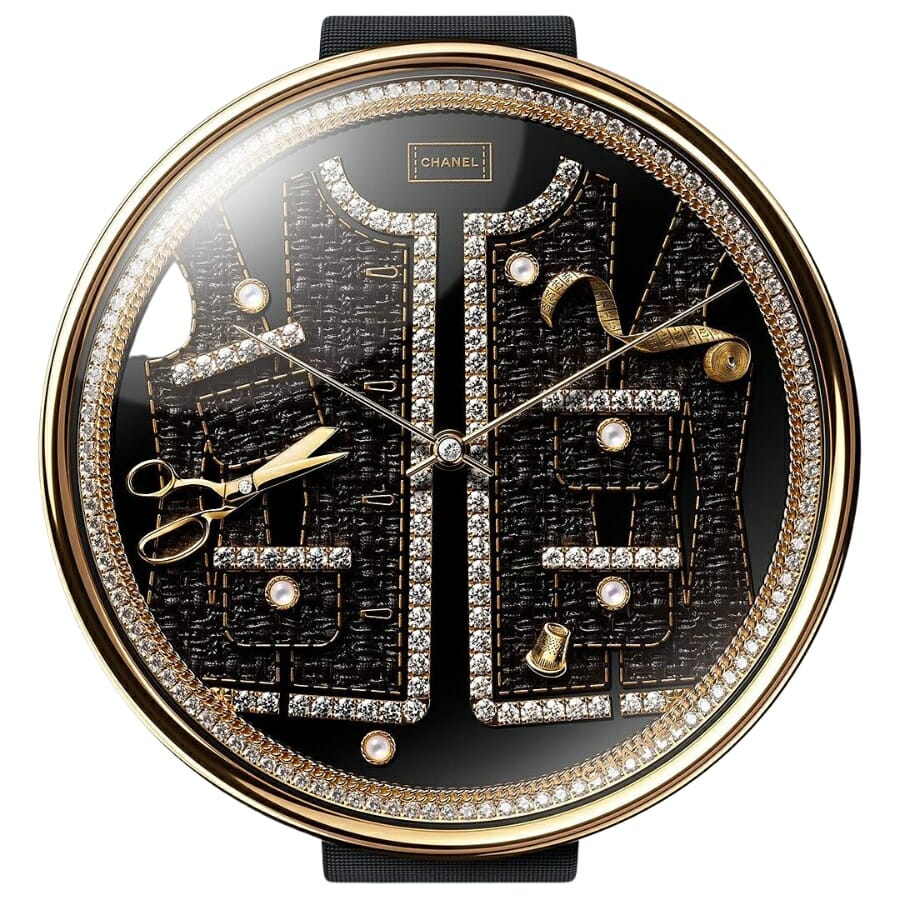
Some things are easy to scratch with a fingernail, while others might need something much tougher, like a steel nail, to leave a mark. When it comes to minerals, the scale we use to measure this toughness is called the Mohs Scale.
Quartz is a pretty tough mineral. On the Mohs Scale, which goes from 1 (softest) to 10 (hardest), it scores a 7. That means it’s harder than many other minerals. If you tried to scratch it with a coin or even a piece of glass, you wouldn’t have much luck.
Now, let’s talk about the champion of hardness: diamond! Diamonds are the hardest natural material on Earth. They top the Mohs Scale with a perfect score of 10.
This means that nothing can scratch a diamond, except another diamond. That’s super impressive! Jewelers even use diamond-tipped tools to cut and shape other diamonds because only a diamond is tough enough for the job.
Both are strong in their own ways, but diamond takes the crown for being the absolute toughest.
Density – Quartz is less dense than diamond
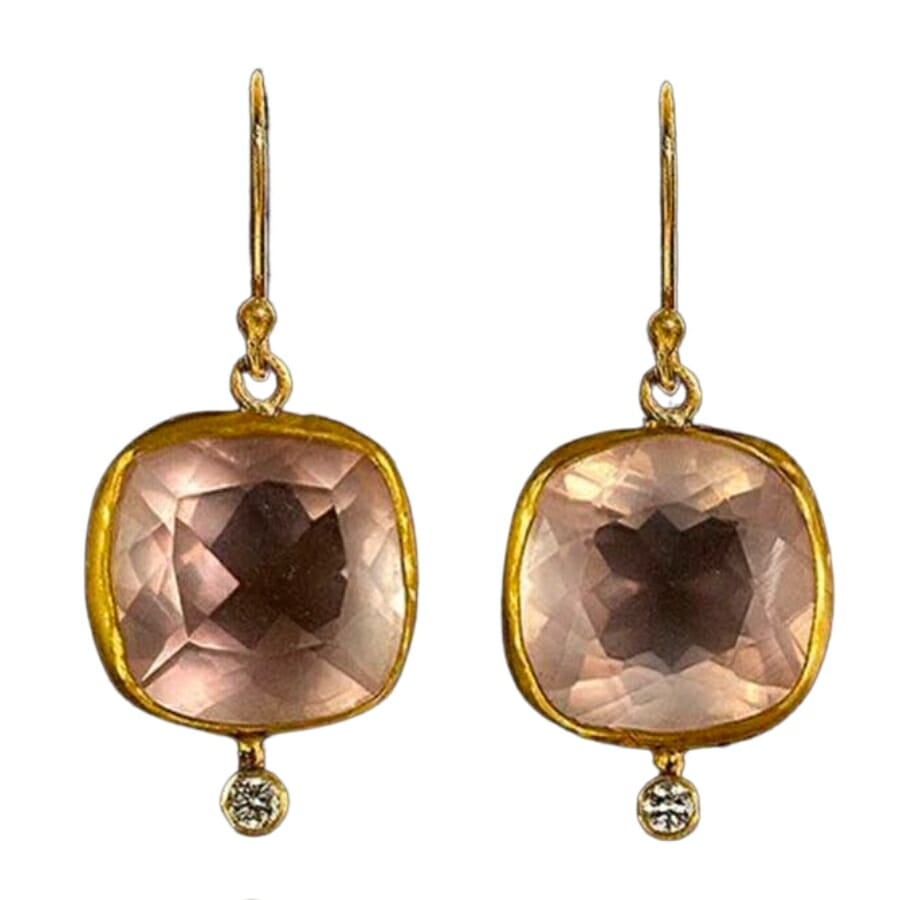
Imagine you have two boxes of the same size, but one is packed with feathers and the other with sand. When you lift them, the sand-filled box feels a lot heavier, right? That’s because sand is denser than feathers.
Similarly, in rocks and minerals, some are heavier than others, even if they take up the same amount of space. Density is like a mineral’s “weightiness”. It tells us how much stuff (or mass) is packed into a certain space. The higher the number, the denser the mineral!
Quartz has a density of about 2.65 g/cm³. That means a little cube of quartz that’s 1 centimeter on each side would weigh 2.65 grams. It’s pretty dense, but not the heaviest kid on the block.
On the other hand, diamond has a density of around 3.5 g/cm³. So, if you had a cube of diamond the same size as the quartz cube, the diamond would be noticeably heavier! That extra weight comes from the tightly packed carbon atoms inside.
Formation – Diamond forms under extreme heat and pressure deep within the Earth
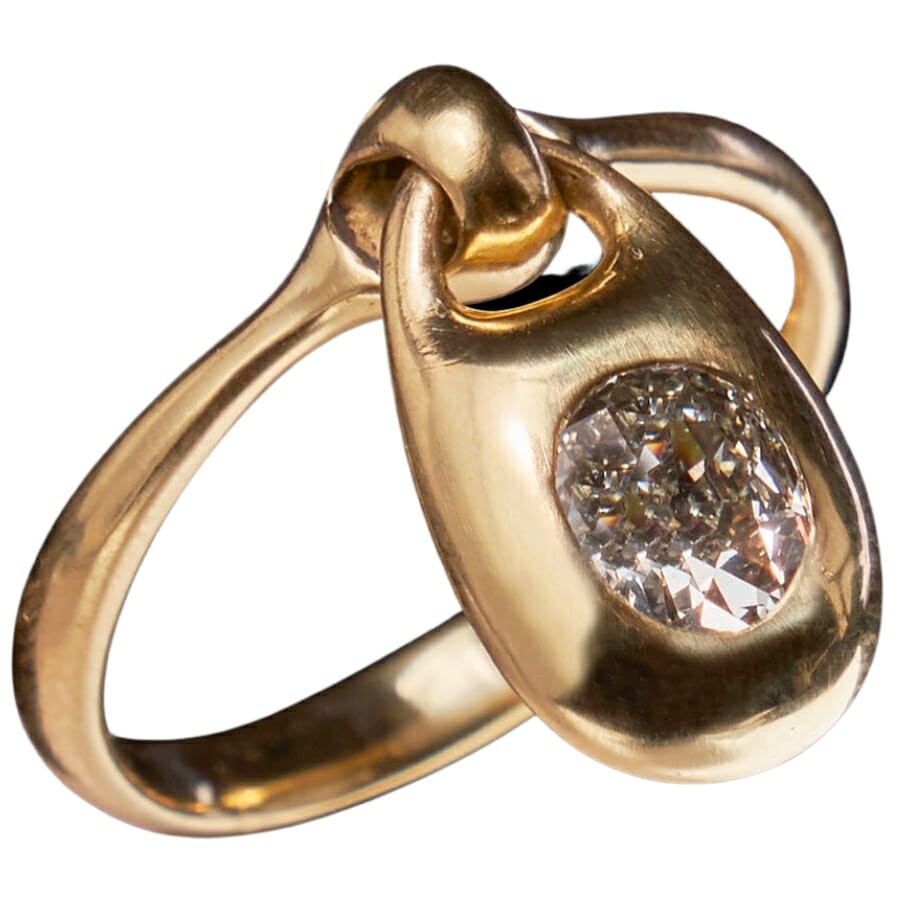
Quartz mostly forms when hot, watery solutions filled with different elements move through cracks. As these solutions cool down and the water evaporates, the elements come together to form quartz crystals.
Sometimes, this happens near the surface, like in soil, and other times it’s deeper underground. The cool part? Depending on what other elements are in that mix, quartz can end up being different colors.
As for diamonds, they are born deep, deep in the Earth, about 100 miles down. They form under extreme heat and pressure over billions of years. The carbon atoms get squeezed so tight that they bond together to form diamond crystals.
Then, volcanic eruptions bring them closer to the surface. Diamonds hitch a ride on molten rock to reach places where we can find them.
So, while quartz forms from watery solutions mostly closer to the surface, diamonds start their journey in the deep, fiery depths of our planet.
Location – Quartz is an abundant mineral and can be found worldwide
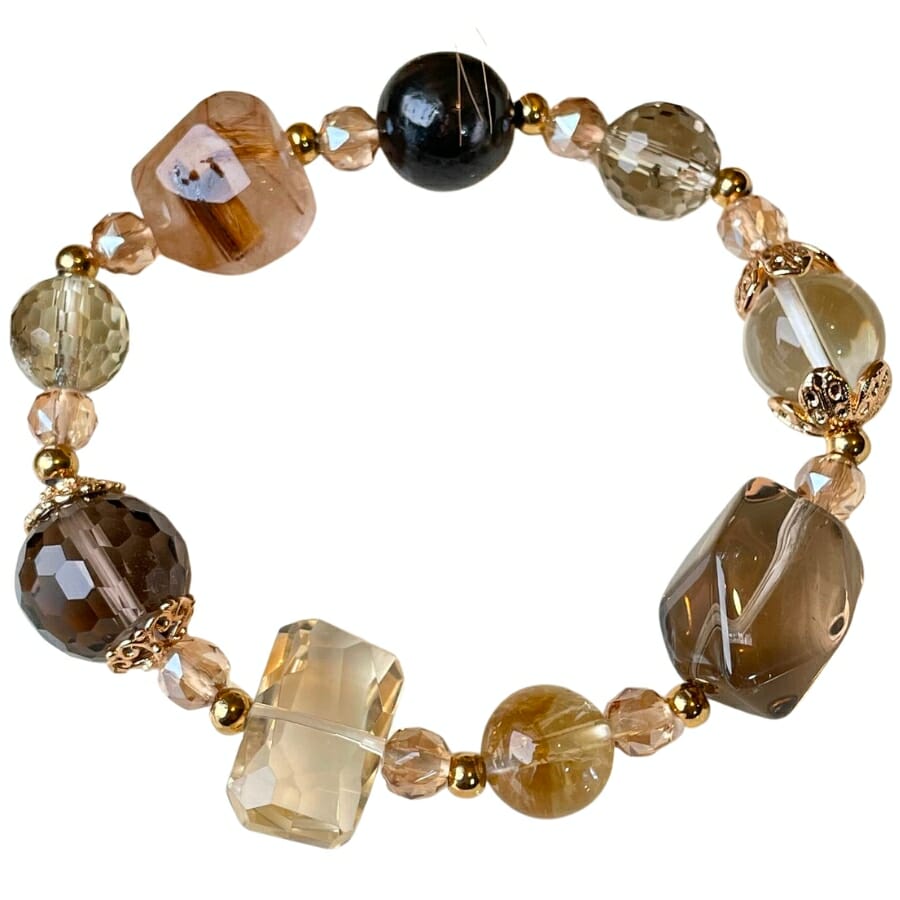
Quartz is found all over the world. You can discover it in your backyard, on a mountain, or at the beach. It’s super common and forms in various environments, from sandy deserts to snowy mountains.
Places like Arkansas in the US and Brazil in South America are famous for their beautiful quartz crystals. Because it’s so widespread, many countries have their own special quartz deposits. To know where to find quartz near you, check out our guide.
But it’s quite a different story for diamonds. It’s mostly found in places where volcanic eruptions have happened, which brought them up to the surface.
Some of the most famous spots to find diamonds are in African countries like Botswana, South Africa, and the Democratic Republic of the Congo. But diamonds are also found in Russia, Australia, and even in the US.
Visit our article on the best rockhounding locations where you can find diamonds. You can also head to our guide to the gem mines near you that might have both quartz and diamonds.
Fluorescence – Diamond exhibits fluorescence
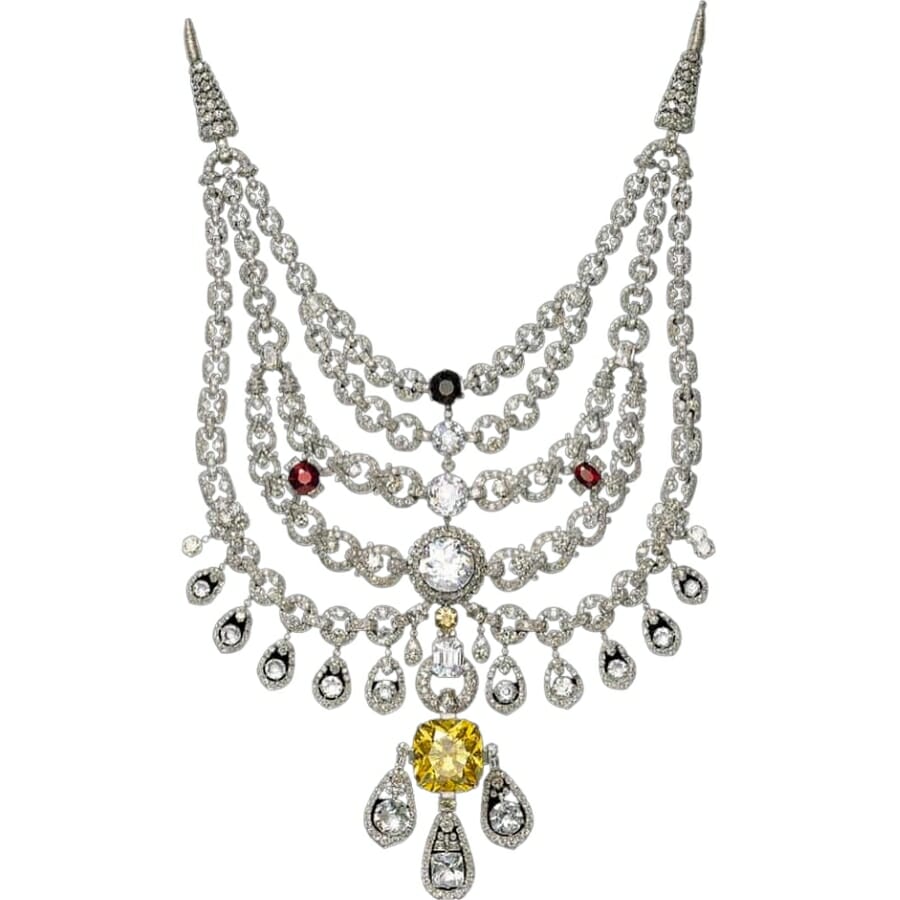
Have you ever seen something glow under a black light? That cool glow is called fluorescence. Some minerals can also glow under certain lights.
Most quartz varieties don’t really fluoresce, which means they don’t glow much under a black light. However, there are exceptions. Sometimes, when certain minerals mix in with quartz, they can make it fluoresce. But this is not super common.
Now, let’s flip the switch to diamonds. Many diamonds can glow under a black light. The most common color they glow is blue, but they can also shine in other colors like yellow, white, or even red.
Why do diamonds do this? It’s because of tiny amounts of other elements, like boron, inside them.
Streak – Quartz leaves a white streak
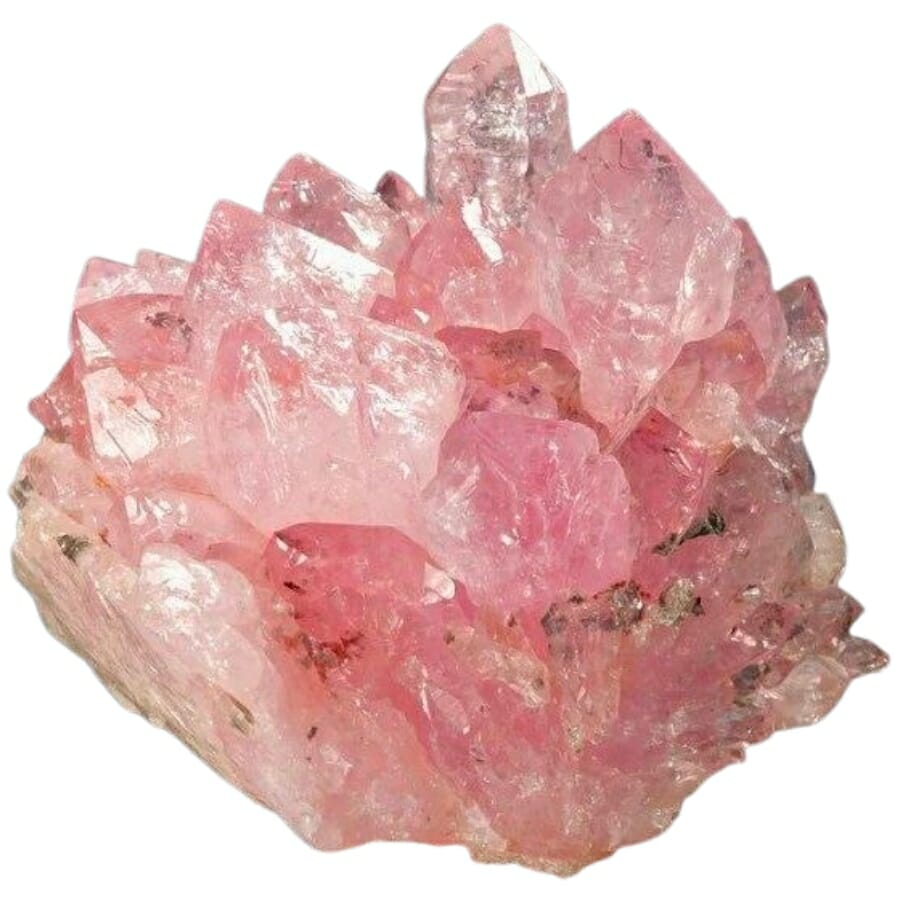
When you color on paper with a crayon, the color that appears on the paper is what you’d call its streak. Minerals have something similar to that. When you rub them on a special plate, the color they leave behind is their streak.
Even though quartz can be found in many colors like pink, purple, or clear, it always leaves a white streak. No matter what shade of quartz you have, if you rubbed it on a streak plate, it would leave a white line.
On the other hand, diamonds, being the super-strong gems they are, have a unique situation.
They’re so hard that they would actually scratch the streak plate rather than leave a color behind! That means diamonds don’t really have a streak color in the usual way other minerals do.
So, comparing the two is like having a crayon that always colors white and another crayon that’s too strong to color on regular paper.
Price – Diamond has a higher price tag
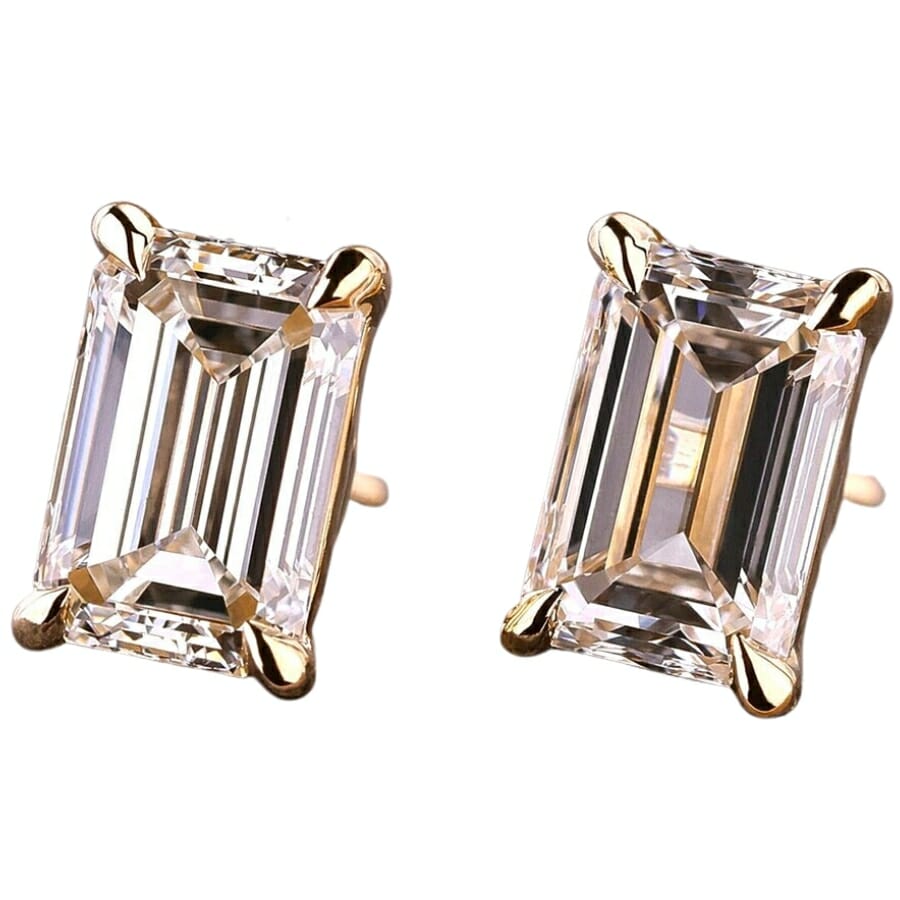
Quartz is pretty affordable and wallet-friendly. Why? It’s found in many places around the world, which means there’s a lot of it. Plus, while it can look super pretty, especially when it’s polished, it’s not as rare as some other gems.
Just like it’s cheaper to buy things that are made in large quantities, how much quartz is worth is affected by its abundance.
There are some exceptions, though. Special types of quartz, like those with unique colors or patterns, might cost more.
In comparison, diamond comes with a higher price tag. They’re much rarer than quartz and are also in high demand because many people love them for jewelry.
Plus, the process of mining, cutting, and polishing diamonds is intensive. All these factors affect the value of diamonds and make them more expensive.
Quartz vs Diamond – The Similarities
While there are considerably more differences between quartz and diamond, these two beautiful natural treasures also share a few similarities, such as the following:
Magnetism – Neither quartz nor diamond is magnetic
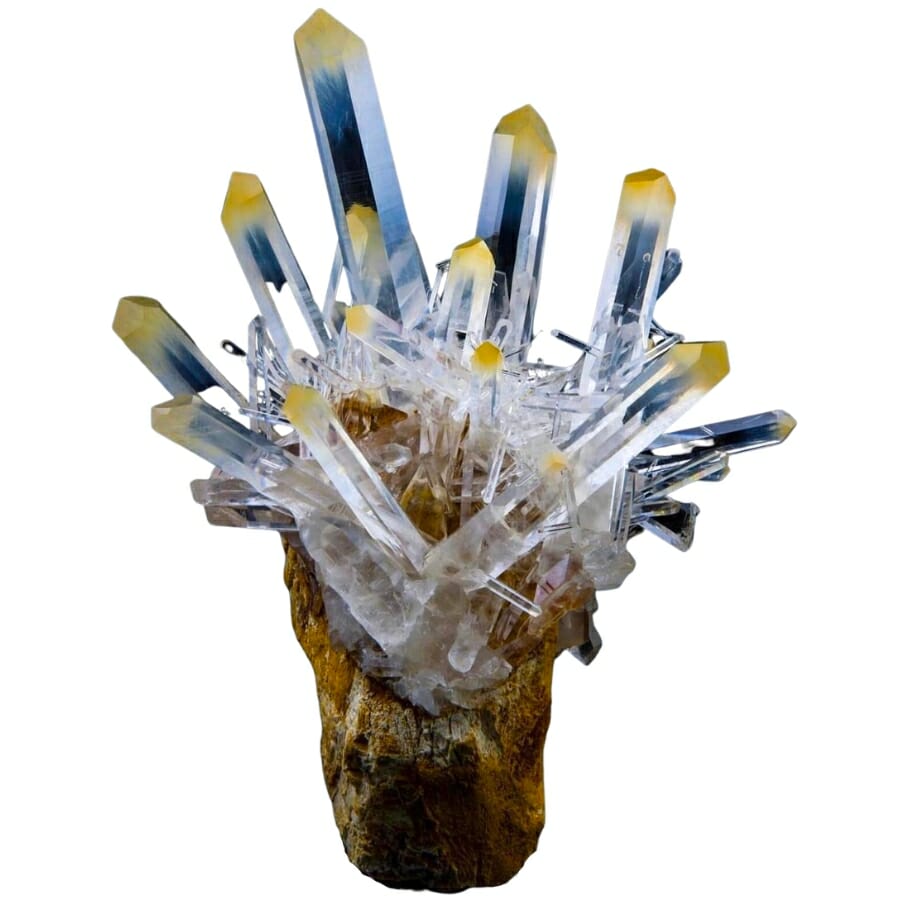
Both quartz and diamond are not naturally magnetic. That means if you take a regular magnet and put it close to these gems, they won’t jump up and stick to it as some metal objects do.
But here’s a twist: even though they’re not magnetic themselves, both quartz and diamond can be affected by strong magnetic fields in special situations.
In super high-tech labs, scientists can use powerful magnets on these minerals for various experiments. But remember, this doesn’t mean your diamond ring or quartz necklace will stick to the fridge door!
Conductivity – Both diamond and quartz are insulators
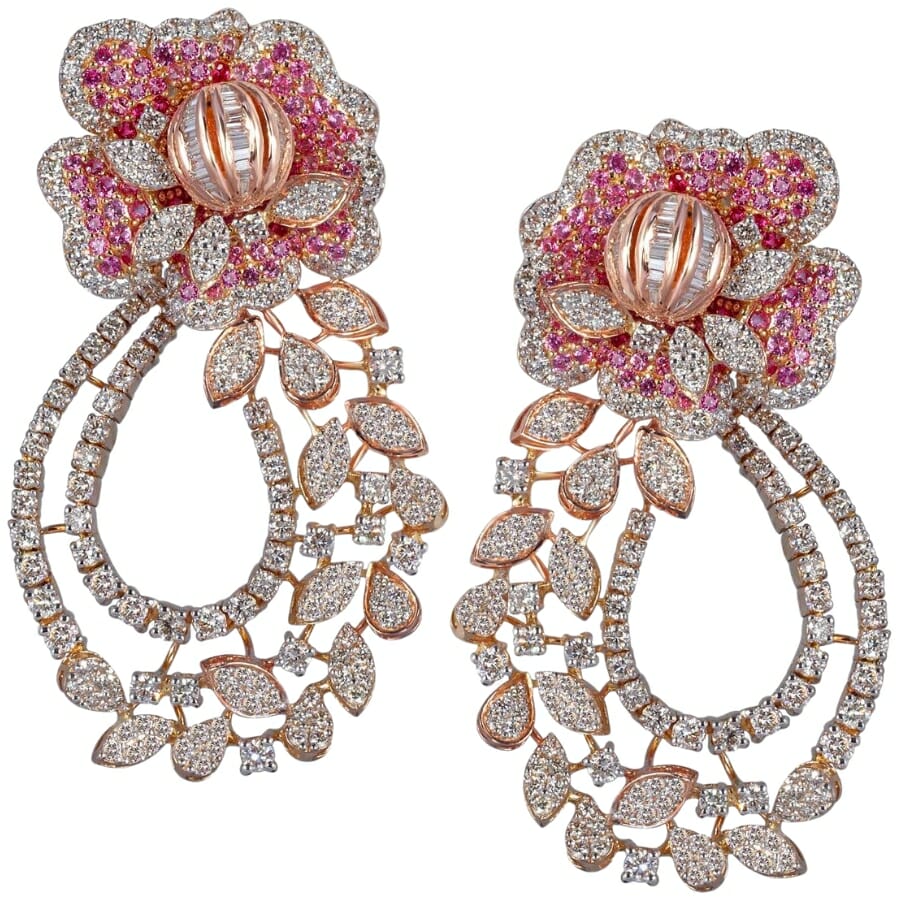
Conductivity is all about how well something can carry electricity. Generally, quartz isn’t a good conductor of electricity. It’s an insulator, which means it doesn’t let electricity flow through it easily.
Pure diamonds, made up of just carbon atoms, are also usually insulators like quartz. They don’t let electricity flow through them.
But, there’s a twist! If a diamond has tiny bits of other elements inside, like boron, it can become a conductor. That means it can carry an electric charge!
So, what’s the big similarity between quartz and diamond? In their most common and pure forms, both of them are insulators and don’t conduct electricity well.
The Easiest Ways To Tell Quartz and Diamond Apart
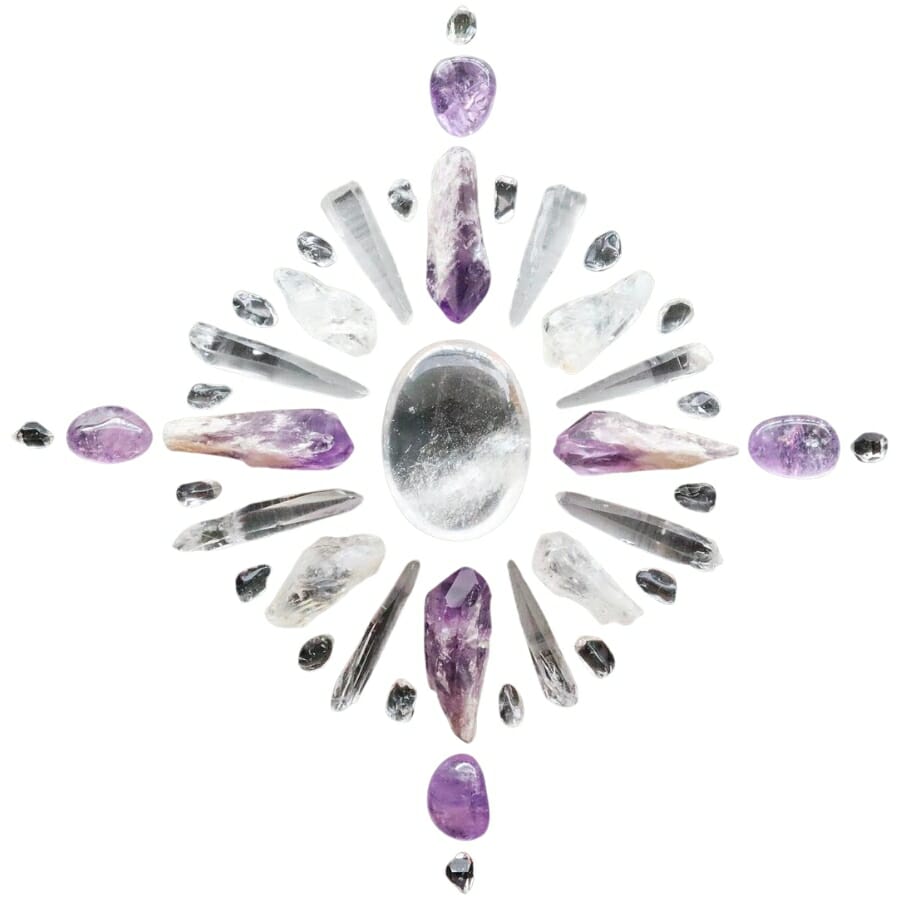
Now that you know all about the major differences between quartz vs diamond, let’s go through the different practical ways you can tell whether a specimen is one of these two:
Do a hardness test
One of the coolest ways to differentiate between quartz and diamond is the hardness test. Diamonds are the hardest natural substance on Earth, while quartz is not as hard.
If you have an uncut diamond and quartz, you can try to scratch the quartz with the diamond. The diamond will easily leave a mark on the quartz, but the quartz won’t do the same to the diamond.
Remember, though, to be gentle! You wouldn’t want to damage your gemstones.
Check for a sparkle factor
Diamonds are famous for their brilliant sparkle. When light hits a diamond, it breaks up into a rainbow of colors, creating a dazzling effect.
Quartz can be sparkly too, but it doesn’t have that same intense rainbow shimmer. So if you have a gemstone that sparkles like a disco ball, it might just be a diamond!
Try a simple heat test
This one’s a bit more technical but super cool. Diamonds are great at spreading heat, while quartz holds onto it.
If you breathe on a diamond (like you’re fogging up glasses to clean them), the fog will disappear quickly. If you do the same with quartz, the fog will stick around for a bit longer.

